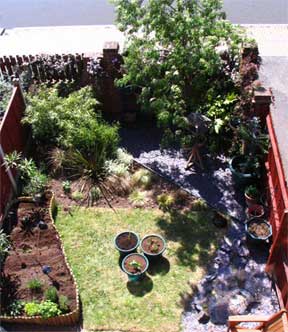The winter months are a good time to think over your garden problems – why this plant didn’t grow, why that shade tree is standing still, no bigger than when it was planted. The experienced gardener soon realizes that when plants are put in the ground deeper than they were growing before, so that their roots are literally buried, growth is seldom satisfactory.
Roots need air just as do leaves, and consequently they should be barely beneath the surface to get the best soil aeration possible. It is amazing how many shade trees grow only an inch or two a year when they should be growing 12 or even 18 inches, just because the roots are a foot or maybe two beneath the surface instead of up near the surface.

Remember all the free advice you got when you had your first baby, or that you get every time you have a cold? There are also all kinds of free garden advice. Unfortunately, many of the people giving it are no better at plant care than you are. You will find that by going to your county extension agent, who is a local representative of your state agricultural college, you will get the latest and best information available for your community. This is particularly true as to fruit and vegetable varieties and to the control of insects and plant diseases.
In traveling around the country, to town and state to state, I always like to look in on stores selling seeds and plants. Some of these make it their full time business; others do it just to earn a dollar or two in the spring. If I were buying a diamond, I would go to the best jeweler in town. For the same reason, if I were buying plants, I would go to someone whose business it is to grow and sell them, who would know whether the plants they were selling me were alive or dead, and who would be responsible for those plants in case they did not live and grow.
Trying New Things
While you are sitting in front of the fire dreaming about your spring plants, be sure to include in your dreams some plants you have never grown before; look over the catalogs and pick out some plants and flowers that are new to you, maybe new to your community. Try out one or two new shrubs or evergreens. And instead of the same shade trees that everyone else plants, try some that are different.
If in doubt as to what will succeed in your community, check with your local nursery to see what they have for sale; check with your friends and neighbors to see what they have grown, or tried and failed to grow. Even though you may feel that our native flowers, trees and shrubs are the best, actually we find that some of the exotic plants introduced from China, Japan, and Europe, grow better than many of the natives.
Here are a few tips for tardy to the planting party, those who sometimes forget to do things at the proper time. Spring blooming bulbs such as daffodils, hyacinths and tulips that you forgot to plant last fall will be worthless next fall. Try to plant them out of doors now, all in one bed if necessary. Cover them with a foot or so of leaves or straw or pot them up in moist soil. Then bury the pots under a foot of mulch or peat for two months to give them time to root. Then bring them indoors in March for better and earlier bloom than from bulbs in your garden.
For those ailing house plants, try watering them more often. Look at them every day and if the soil is not moist, water it. Try sowing some Lilium formosanum seed in a cool sunny window this month. If you keep it growing it may bloom late next September with gorgeous fragrant, white flowers on five or seven foot stems. And don’t forget to send for all the seed and nursery catalogs advertised in this and succeeding issues. Why not send a sample order to some of them for plants you have never grown before?
